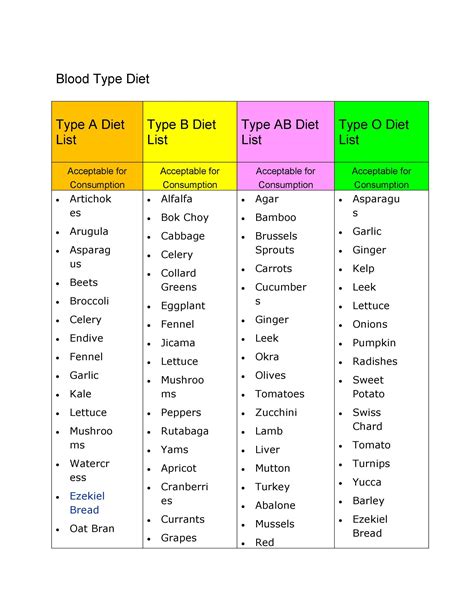Learn about the Tongue Patch Diet: application process, side effects, effectiveness, and considerations before trying.
Understanding the Tongue Patch Diet
Contents
The Tongue Patch Diet is a relatively new weight loss method that involves inserting a small medical patch onto the patient’s tongue. This patch makes it painful and uncomfortable to eat solid foods, often resulting in a drastic reduction in calorie intake. The idea behind this approach is to force the patient to consume only liquids, such as soups and shakes, leading to rapid weight loss. While it may seem extreme, some individuals with a high body mass index have turned to the Tongue Patch Diet as a last resort to jumpstart their weight loss journey.
Despite the potential for rapid weight loss, it’s important to understand that the Tongue Patch Diet is not a sustainable or healthy long-term solution. The discomfort and limited intake associated with this approach may lead to nutritional deficiencies and other health risks if not carefully monitored. Additionally, the cost of the procedure and potential side effects should be carefully considered before deciding to pursue this method of weight loss.
Before considering the Tongue Patch Diet, individuals should consult with a qualified healthcare professional to discuss their weight loss goals and explore safer, more sustainable options. It’s essential to prioritize overall health and well-being when making decisions about weight management, and the Tongue Patch Diet may not be the most appropriate choice for everyone.
The Application Process
What is Tongue Patch Diet?
The tongue patch diet is a controversial weight-loss method that involves having a small plastic patch sewn onto the tongue, which makes eating solid foods extremely painful. The idea behind this extreme measure is to force the dieter to stick to a liquid-only diet, leading to rapid weight loss. But before considering this drastic approach, it’s important to understand the application process and what it entails.
Firstly, the application process for the tongue patch diet involves a surgical procedure in which the patch is sewn onto the tongue, making it difficult and painful to eat solid foods. The patch is typically left in place for about a month, during which time the individual is restricted to a liquid diet. This can be a major lifestyle adjustment and should not be taken lightly.
Once the patch is sewn onto the tongue, the individual will need to closely follow a liquid diet in order to avoid experiencing severe pain while eating. This can include consuming smoothies, soups, and other liquid-based meal replacements. It’s important to consult with a medical professional to ensure that the liquid diet is balanced and provides essential nutrients.
During the application process, it’s crucial to carefully consider the potential risks and side effects associated with the tongue patch diet. These can include pain, difficulty speaking, and the risk of infection at the site of the patch. It’s important to weigh these potential risks against the desired weight loss results and to make an informed decision.
Ultimately, the application process for the tongue patch diet is a serious undertaking that requires careful consideration and consultation with a medical professional. It’s important to fully understand the process and potential implications before deciding to pursue this extreme weight-loss method. Considering all factors, it’s crucial to make an informed decision that aligns with your overall health and well-being.
Potential Side Effects
Before considering the Tongue Patch Diet as a weight loss option, it’s important to understand the potential side effects that come with it. The most common side effect reported by those who have undergone the procedure is extreme discomfort and pain in the mouth and throat. This is due to the fact that the tongue patch is sutured to the tongue, making everyday activities such as eating, drinking, and speaking extremely difficult and painful.
Another potential side effect to consider is the risk of infection. The mouth is a breeding ground for bacteria, and the tongue patch procedure increases the risk of infection due to the open wound where the patch is sewn onto the tongue. If proper care and precautions are not taken, this can lead to severe infections that may require medical intervention.
Some individuals have also reported experiencing an allergic reaction to the materials used in the tongue patch. This can manifest in symptoms such as swelling, itching, and inflammation around the tongue area. It’s important to consult with a healthcare professional to determine whether you may be at risk for an allergic reaction before undergoing the procedure.
In addition to physical side effects, it’s also important to consider the potential psychological impact that the tongue patch may have. The extreme restrictions on food intake and the discomfort associated with everyday tasks can take a toll on an individual’s mental and emotional well-being. It’s crucial to carefully weigh the potential side effects, both physical and psychological, before deciding to undergo the Tongue Patch Diet.
Effectiveness of the Tongue Patch Diet
The effectiveness of the tongue patch diet has been a topic of debate among health and nutrition experts. This controversial weight loss method involves surgically attaching a small patch to the tongue, making it painful to consume solid foods. It is marketed as a quick fix for rapid weight loss, but many are skeptical of its long-term effectiveness.
Proponents of the tongue patch diet claim that it can lead to dramatic weight loss in a short amount of time. They argue that the discomfort caused by the patch makes it difficult to eat, leading to a significant reduction in caloric intake. However, critics argue that the weight loss achieved through this method is not sustainable and can have negative impacts on overall health.
Studies on the effectiveness of the tongue patch diet have yielded mixed results. While some participants have reported substantial weight loss during the time they wore the patch, many have regained the weight once the patch was removed. Additionally, the potential health risks of this procedure, such as infection and difficulty speaking or swallowing, raise significant concerns about its overall effectiveness.
It is important for individuals considering the tongue patch diet to carefully weigh the potential effectiveness of this method against its potential risks and side effects. Consulting with a healthcare professional and exploring alternative, more sustainable weight loss strategies is essential before pursuing this extreme approach.
Considerations Before Trying the Tongue Patch Diet
Before considering the Tongue Patch Diet as a weight loss solution, it’s important to understand the potential risks and side effects that come with it. One of the main things to consider is that the procedure involves sewing a small piece of mesh onto the tongue, making it painful to eat solid foods. This can lead to difficulties in getting proper nutrition and may have long-term implications for overall health.
Additionally, it’s crucial to consider whether the Tongue Patch Diet is a sustainable solution for weight loss. While it may result in short-term weight loss, there is no guarantee that the weight will stay off once the patch is removed. It’s important to evaluate whether this extreme measure is the best choice for long-term health and well-being.
Another important consideration is the cost of the procedure. The Tongue Patch Diet is not covered by insurance and can be quite expensive. Before committing to the procedure, individuals should carefully weigh the financial cost against the potential benefits and long-term implications.
Furthermore, it’s important to consult with a healthcare professional before undergoing the Tongue Patch Diet. A doctor can provide valuable insight into whether the procedure is a safe and suitable option for individual health and weight loss goals. They can also offer guidance on alternative, less invasive weight loss methods that may be more appropriate.











